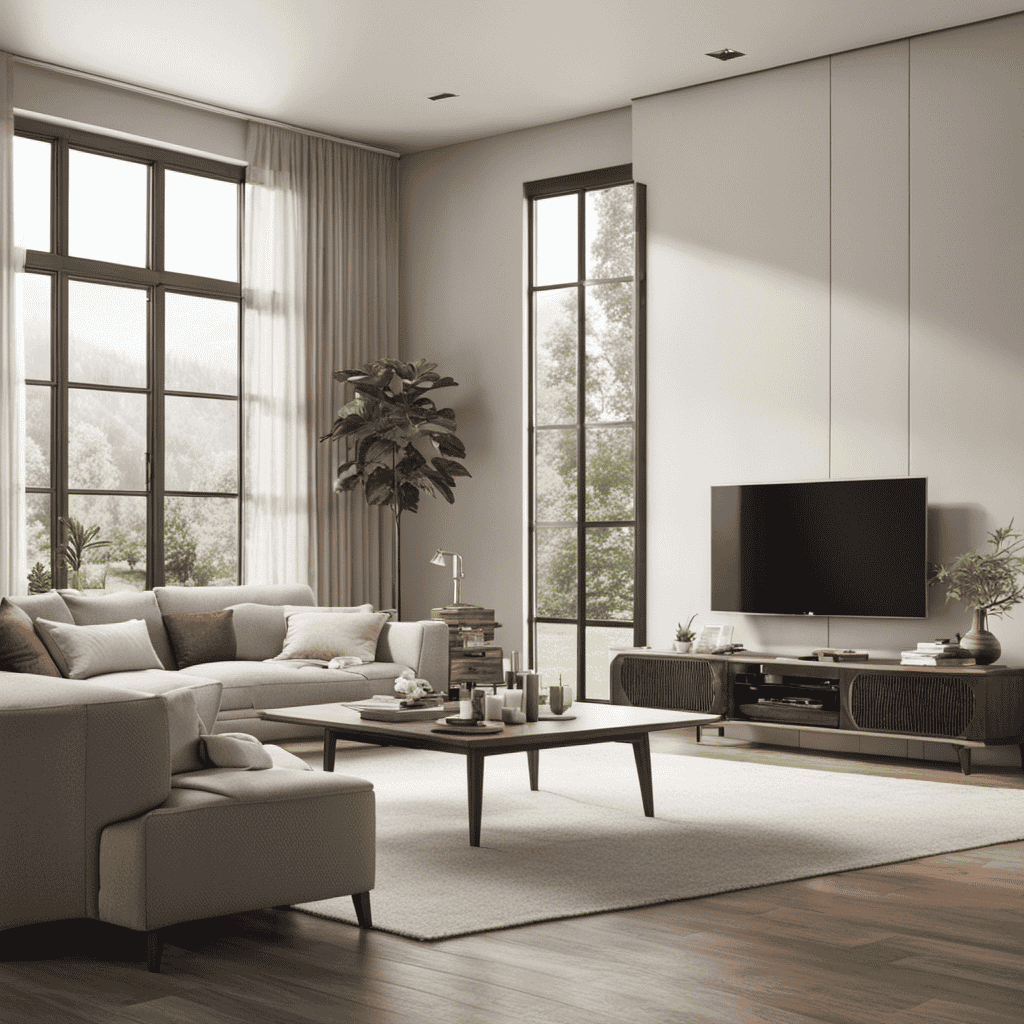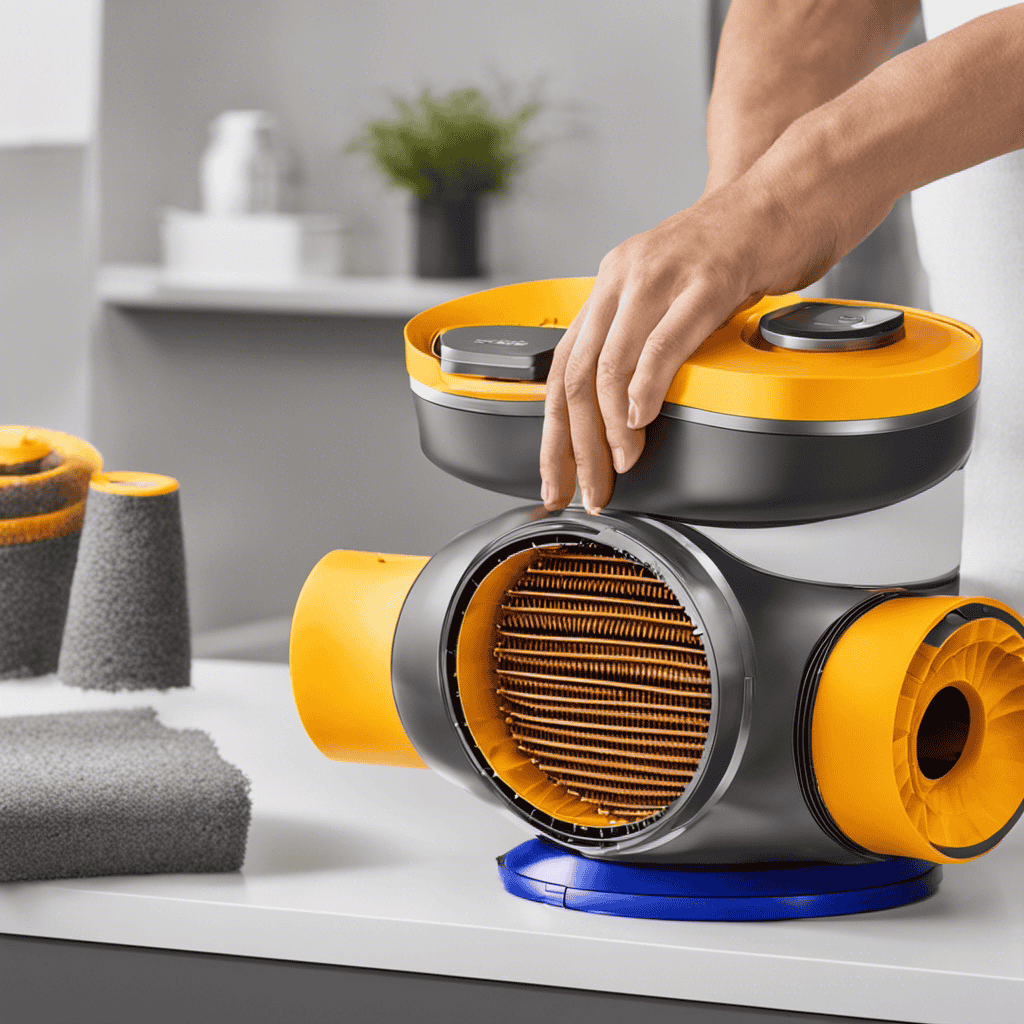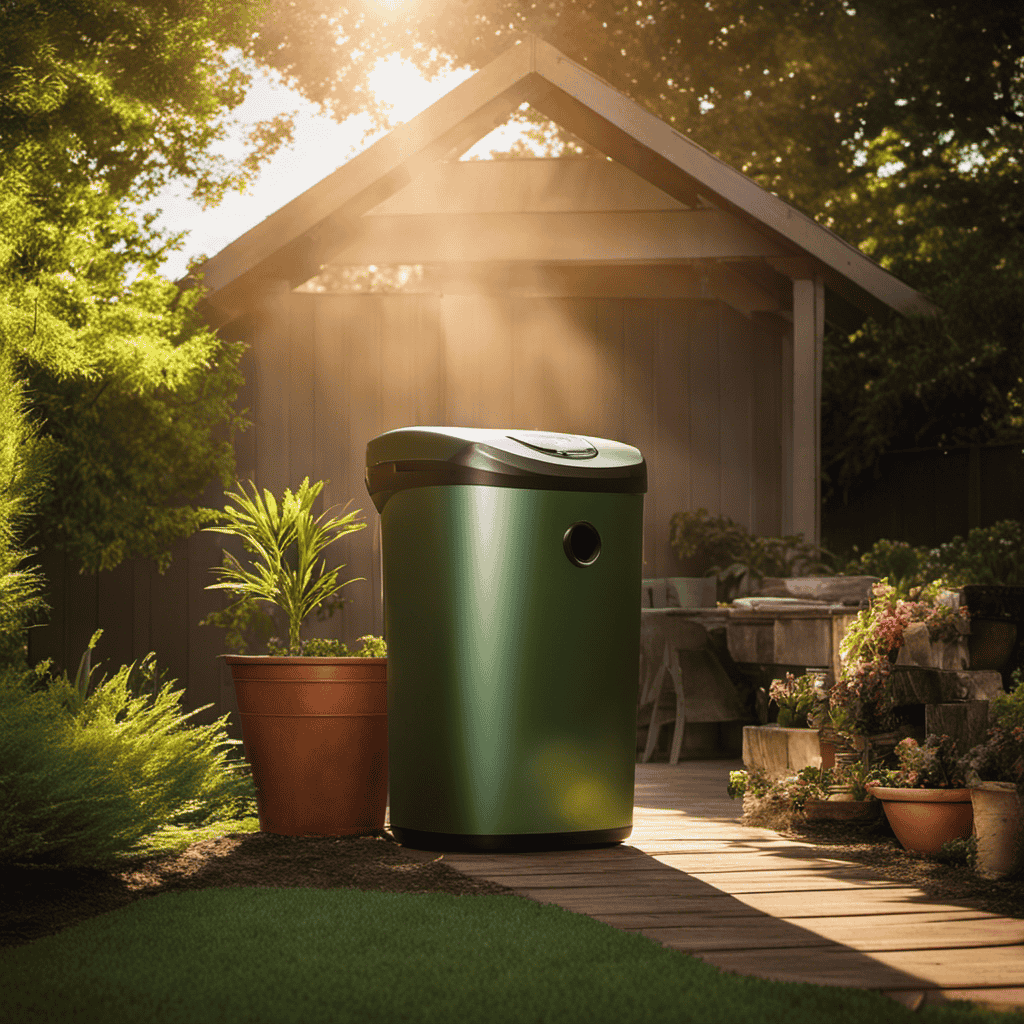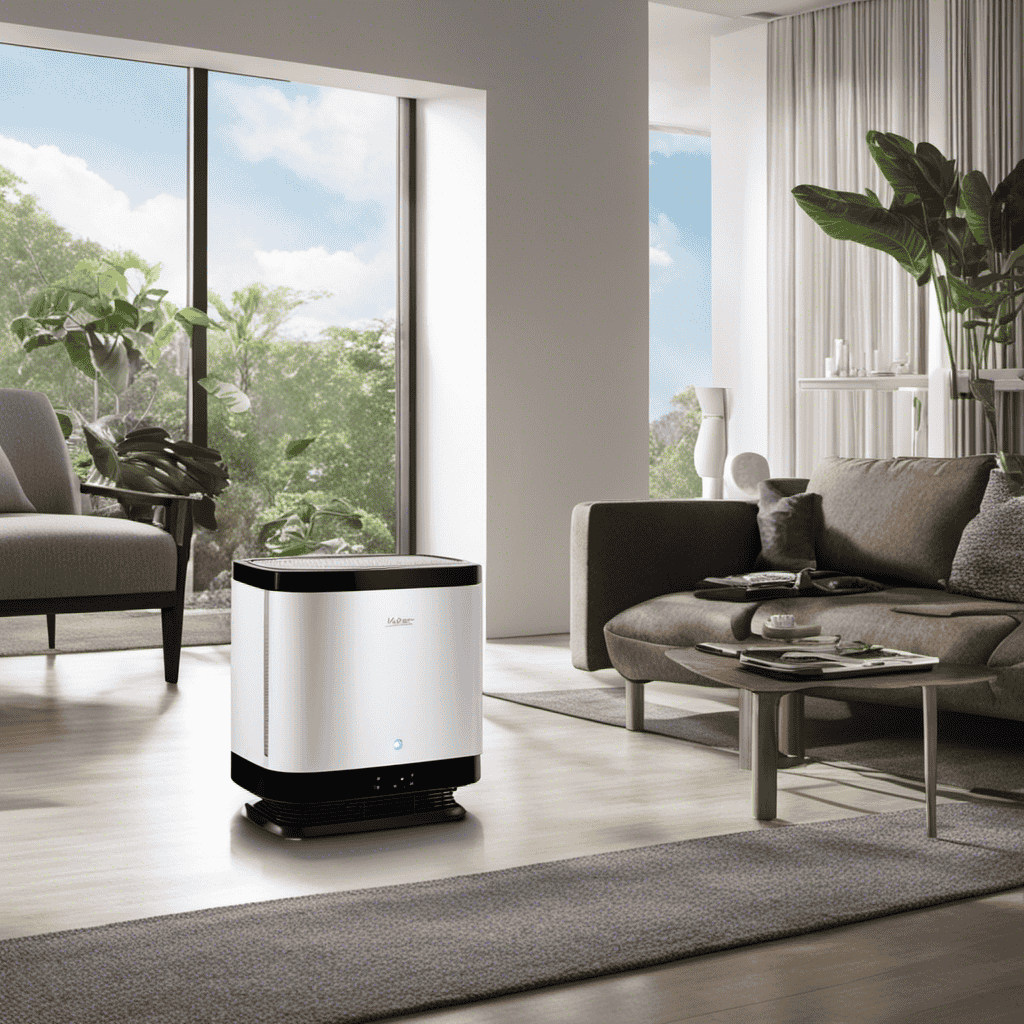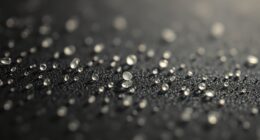As someone who loves to research and is a homeowner, I understand the significance of having clean, fresh air in your home. Selecting the appropriate air purifier may seem overwhelming, but don’t worry! In this article, I will walk you through the process, assisting you in making a well-informed choice.
Think of me as your air quality guru, providing you with expert advice and tips to select the perfect air purifier that suits your needs.
Let’s dive in!
Key Takeaways
- Consider the different types of air purifiers available, such as HEPA filter and activated carbon filter purifiers, to address specific air pollutants and needs.
- Take into account factors like the size of the space, maintenance requirements, energy efficiency, and noise level when choosing an air purifier.
- Understand the features and specifications of air purifiers and how they align with your home’s specific needs.
- Determine the right size and capacity of the air purifier based on the square footage of your home and the air pollution levels in your area.
Types of Air Purifiers to Consider
When choosing an air purifier for your home, you should consider the different types available.
There are various brands of air purifiers on the market, each with their own unique features and benefits. It is important to do thorough research to find the one that suits your needs and budget.
One type to consider is a HEPA (High-Efficiency Particulate Air) filter purifier. These purifiers are known for their ability to remove 99.97% of airborne particles, such as dust, pollen, and pet dander.
Another type is an activated carbon filter purifier, which is effective in removing odors and chemicals from the air.
Additionally, there are cost-effective air purifiers available, which offer good performance at a reasonable price.
Factors to Consider When Choosing an Air Purifier
One important factor to consider when selecting an air purifier for your household is the size of the space it needs to cover. The effectiveness of an air purifier depends on its ability to circulate and clean the air in a given area. To ensure optimal performance, it is essential to choose an air purifier that is suitable for the size of your room or home.
Here are some other factors to consider when choosing an air purifier:
-
Air purifier maintenance and filter replacement: Regular maintenance and filter replacement are crucial for the proper functioning of an air purifier. Make sure to check the manufacturer’s instructions and consider the availability and cost of replacement filters.
-
Energy efficiency: Look for air purifiers that are energy-efficient to save on operating costs. Energy Star certified models are a good choice as they meet strict energy efficiency guidelines.
-
Operating costs: Consider the long-term operating costs of the air purifier, including electricity usage and filter replacements. It’s important to factor in these costs when making a decision.
-
Noise level: Some air purifiers can be noisy, especially at higher fan speeds. If noise is a concern, look for models that offer quiet operation.
Considering these factors will help you make an informed decision when choosing an air purifier for your home.
Understanding Air Purifier Features and Specifications
Understanding the features and specifications of air purifiers can help you select the best one for your household. Different air purifiers are designed to target specific common air pollutants, such as dust, pollen, pet dander, mold spores, and even harmful gases like VOCs. By understanding these common air pollutants, you can choose an air purifier with the right filtration system to effectively remove them from your indoor air.
When it comes to air purifier benefits, it’s important to consider the specific needs of your home and family. Additionally, paying attention to the specifications of an air purifier, such as the coverage area, CADR (Clean Air Delivery Rate), noise level, and energy efficiency, can help you make a well-informed decision.
Doing your research and considering the features and specifications of air purifiers is key to improving your indoor air quality.
Determining the Right Size and Capacity for Your Home
To determine the right size and capacity for your household, it’s important to consider factors such as the square footage of your space and the level of air pollution in your area. When choosing the right air purifier size and capacity for your home, keep in mind the following:
-
Energy efficiency: Look for models with an ENERGY STAR certification to ensure they are energy-efficient and won’t spike up your electricity bills.
-
Noise levels: Consider the noise levels of the air purifier, especially if you plan to use it in your bedroom or other quiet spaces. Look for models with adjustable fan speeds or a sleep mode to minimize noise.
Taking these factors into account will ensure that you choose an air purifier that is both effective in purifying your air and suitable for your home’s specific needs.
Now, let’s move on to the next section for tips on comparing and selecting the best air purifier for your needs.
Tips for Comparing and Selecting the Best Air Purifier for Your Needs
When comparing and selecting the best air purifier for your needs, consider factors such as the specific pollutants you want to target, the size of the room where the purifier will be used, and your budget.
It is important to understand the importance of air quality and how it can affect your overall health and well-being.
Regular air purifier maintenance is crucial to ensure its effectiveness in removing pollutants from the air. This includes cleaning or replacing filters as recommended by the manufacturer.
Additionally, routine cleaning of the purifier itself, such as wiping down the exterior and removing any dust or debris, can help maintain its performance.
Frequently Asked Questions
Can I Use an Air Purifier in My Car or Office?
Yes, you can use an air purifier in your car or office. It has many benefits, such as improving air quality and reducing allergens. Factors to consider when choosing one include size, filtration system, and noise level.
Are There Any Potential Health Risks Associated With Using an Air Purifier?
Potential respiratory issues may arise from long term exposure to air purifiers. It is crucial to consider the potential health risks associated with these devices, as they can affect our well-being in ways we may not initially realize.
How Often Should I Replace the Filters in My Air Purifier?
I replace the filters in my air purifier regularly to ensure its effectiveness. The lifespan of air purifier filters varies depending on usage and quality, so it’s important to follow manufacturer recommendations for replacement.
Can an Air Purifier Remove Pet Dander and Allergens From the Air?
Yes, an air purifier can effectively remove pet dander and allergens from the air. It is one of the many benefits of using an air purifier in your home. Regular maintenance, such as filter replacement, is important for optimal performance.
Are There Any Specific Air Purifiers That Are Recommended for Individuals With Asthma or Allergies?
There are air purifiers specifically recommended for individuals with asthma or allergies. These purifiers target allergens and pollutants, providing relief and improving indoor air quality. Some models are designed for large rooms, while others are effective for smokers.
Conclusion
In conclusion, after conducting extensive research and analysis, I’ve discovered that selecting the right air purifier for your home is a crucial decision.
By considering factors such as the types of air purifiers available, understanding their features and specifications, and determining the appropriate size and capacity for your living space, you can make an informed choice.
Remember, knowledge is power, and with the right air purifier, you can breathe easy and enjoy a healthier indoor environment.
As the saying goes, "A breath of fresh air can do wonders for the soul."
